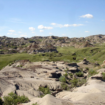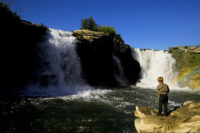Avalanche Canada rates conditions as dangerous as Magrath man killed in Castle area
By Alejandra Pulido-Guzman - Lethbridge Herald on February 27, 2024.
LETHBRIDGE HERALDapulido@lethbridgeherald.com
An avalanche in the back country area between Carbondale and Castle Mountain Ski Resort, claimed the life of a 46-year-old male Magrath resident on Saturday.
RCMP state that on Saturday at 5:52 p.m. the Crowsnest Pass and Pincher Creek RCMP received a report of an avalanche in the back country between Carbondale and Castle Mountain Ski Resort.
During their investigation it was revealed that at approximately 1 p.m. two male adults and two children were snowmobiling in the area when the avalanche took place.
A release states one of the male adults was able to escape with both children, while the other male, who was later identified a as 46-year-old Magrath resident, was buried in the snow.
On Sunday at 1:22 p.m. his body was recovered by Pincher Creek RCMP with the assistance of Southwestern Alberta Regional Search Rescue, K9 and handler from Fernie Search and Rescue and Alberta Conservation. The the man’s body was taken to the Office of the Chief Medical Examiner.
According to the Avalanche Canada website, the area had a forecast issued Friday at 6 p.m. that was valid until Saturday at 6 p.m. showing that “a buried crust associated with faceted snow remains a concern. Carefully assess steep lines for signs of instability.”
Danger ratings are shown as level 2- Moderate for the alpine and treeline areas of the mountains, while a level 1-Low rating was shown for the area below the treeline for Saturday.
Avalanche Canada forecaster Tyson Rettie, during a phone interview with the Herald Monday morning, explained this shows the danger of avalanches at each elevation level.
He said danger goes from low avalanche danger, to moderate, considerable and high, with extreme danger being the highest rating.
“The majority of fatal avalanche incidents in Canada tend to occur when the avalanche danger is rated as considerable, with the next greatest percentage of fatalities occurring when the rating is moderate,” said Rettie.
He said the reason behind this is because when the danger is rated high, there are visible signs of instability, while at considerate and moderate levels those visual cues are harder to spot.
“When we get into considerable or moderate rating, you’re not necessarily surrounded by that evidence that it would be unsafe to travel in avalanche terrain, but that doesn’t mean that humans cannot trigger avalanches, so it makes for a very challenging decision-making scenario,” said Rettie.
He said that since the backcountry areas are not controlled, there is no signage that warns people something is or is not avalanche terrain. Rettie suggests people take an avalanche skills training course where they can learn how to interpret the avalanche forecast, and get the essential companion rescue gear which includes a shovel, a probe and avalanche transceiver.
 “Regardless of the rating, make sure you read the whole forecast details. Below where you see the avalanche danger ratings, you’ll see some travel advice statements,” said Rettie.
“Then below that you’ll see the current avalanche problems and those are different types of avalanches and details on their size and likelihood where they exist in this terrain and some other comments, so it’s important to read the entire avalanche forecast.”
17-16




